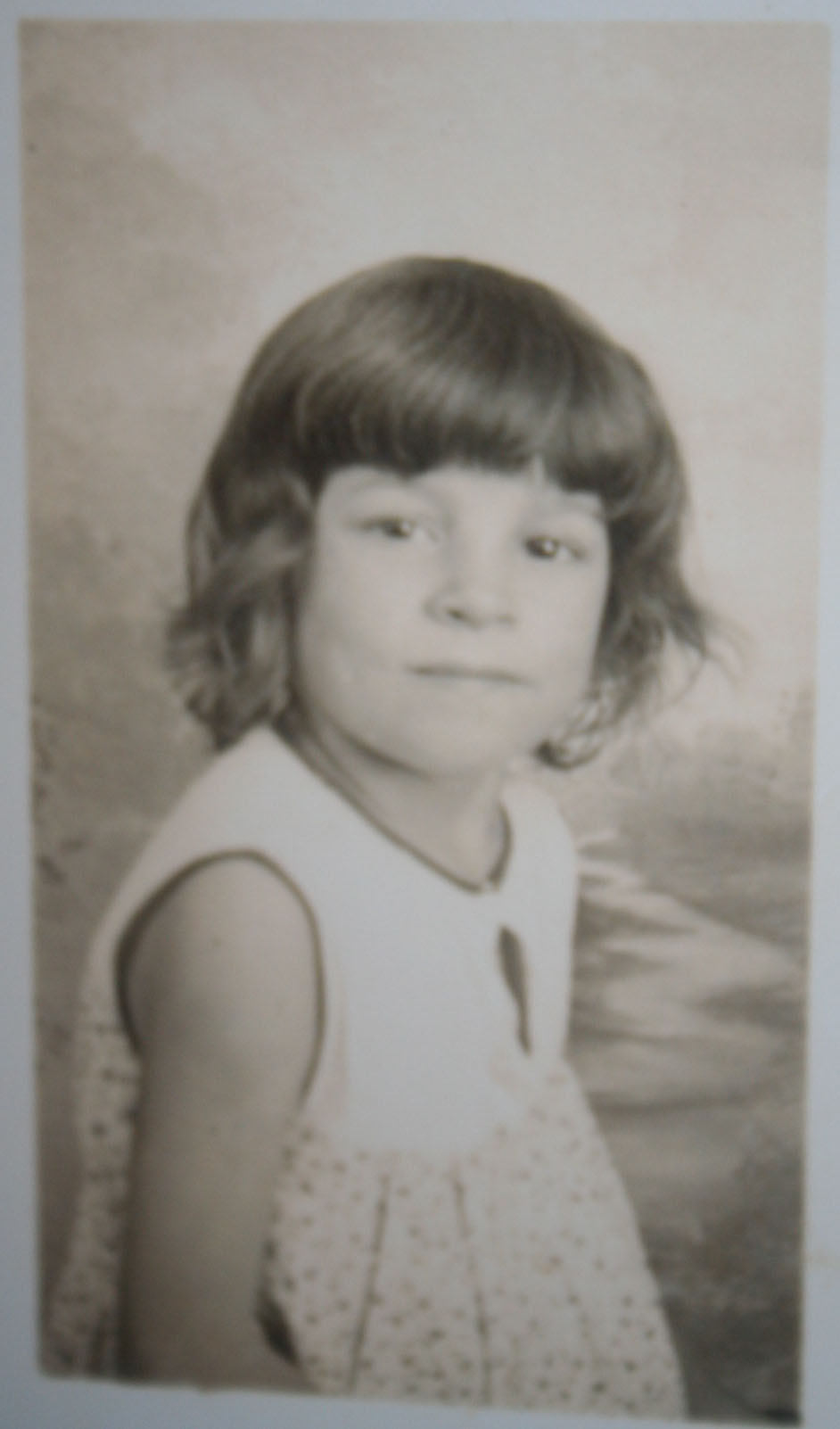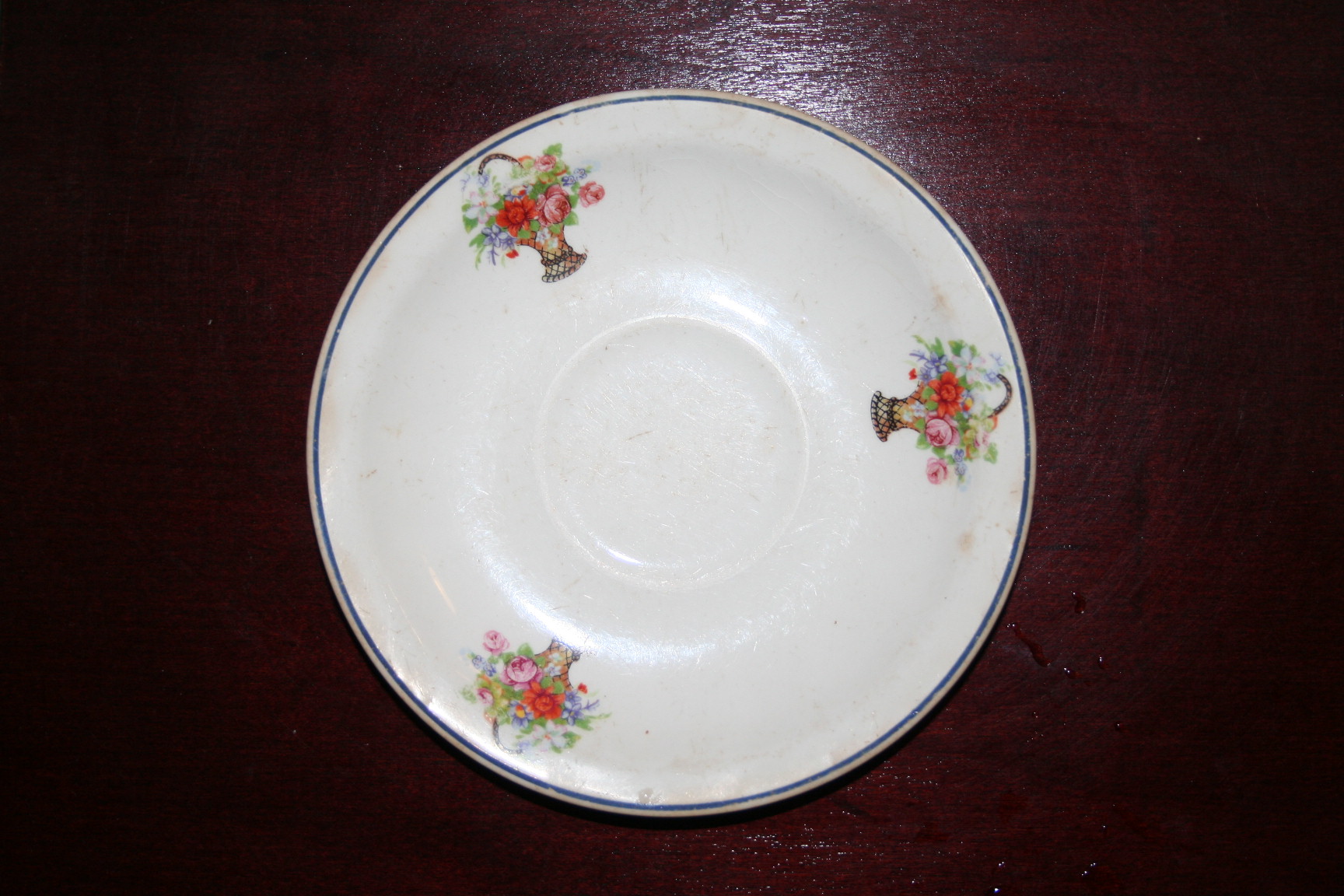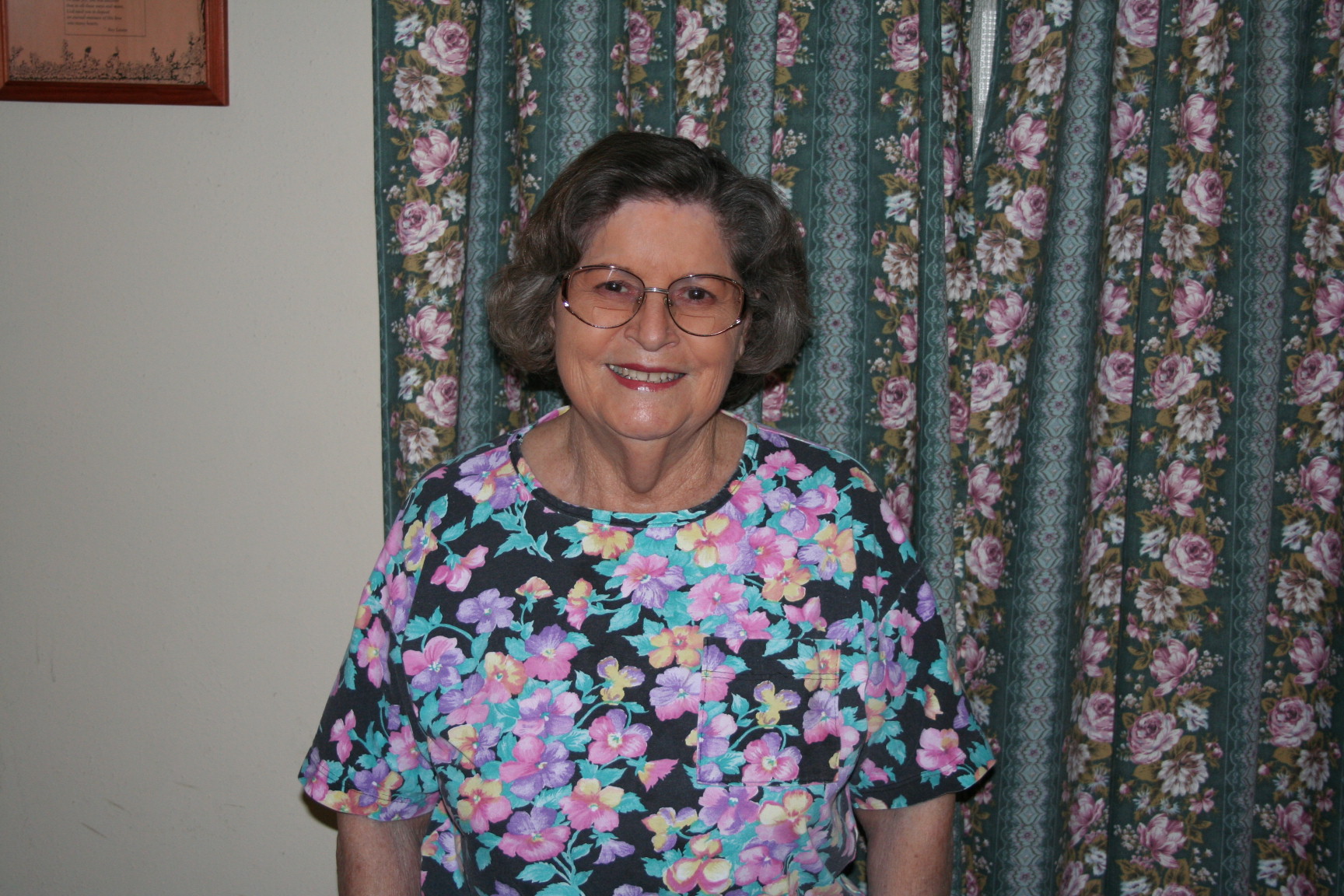

Where did you live during the depression?
I lived between the Southern Pacific and the IGN Railroads in South San Antonio.
What was it like living between the two railroads?
Well it was interesting because, because there was a hobo encampment near there and, the hobos would often come to
our house and ask for food and my mother would always fix them food because we had our own animals, we had our own chickens
so we always had eggs, we had our own hogs so we always had bacon, we always had sausage and we always had milk and butter,
and so she gladly feed the hobos when they would come.
Also an interesting aspect was the railroad crews that would come through to work on the railroad tracks,
watching the Gandydancers singing the Gandydancer song,
as they called it, as they straightened the tracks up they had
one supervisor watching them, and the men would be counting a cadence as they would straighten the tracks out.
Describe a typical day at your school?
Well in the beginning in the mornings, Mr. Caroga would come in and build a fire in a large heater with wood or coal
and that was what, it was a large heater and so it kept the whole room warm, and he’d have to come back during the day and
put more fuel in there so that it would keep the classroom warm.
When we went to the playground all we had was seesaws and swings for physical education until we got to high school
(correction) junior high level, and at that time if children were unruly a teacher could stand a child in the corner or
they could even spank the child with no repercussions, they were allowed to do that.
At lunch time some of the children brought their lunches, one way they carried their lunches was in an empty jelly can it
was like a little bucket, and typically children would carry bologna, potted meat, or peanut butter sandwiches for lunch.
Some students got to eat in the cafeteria for free because they had no money to buy food and a bowl of soup at that time
was only one nickel.
One noticeable difference in school was the Anglo students were assigned to one specific teacher, the Spanish speaking
Mexican students mostly in those days were assigned to a different teacher, they were segregated, to make… for the colored
students as they were called in those days, the Afro-American children went to a different school altogether, they did
not go to the school with the white children.
How would you get to school?
I walked to school it was at least a mile, and in those days it was safe for children to walk to school, I walked
alone most of the time or with my some of my friends. Some of the students would walk as far as Somerset Road to South
San or out Highway 81 to South San, it was called New Laredo Highway at that time, and some of them walked four or five
miles I am sure to get to school, but we didn’t have to worry about anybody molesting us or bothering us in those days,
we could walk freely.
Could you describe a typical day at home with your family?
In the mornings whoever got up first built a fire to keep the rest of the family warm in the winter time, and our
breakfast was usually oatmeal or eggs, we had a bench much like a park bench and we had like a park table was the table
that we used, we each had our chores doing the dishes, when we washed we had to wash with the rug board and we’d boil
clothes in a pot, and then we would have to hang them up on a line to dry, and we had to keep the house clean, everybody
had something to do. My sisters had to milk the cows, where I would be doing work in the house they would be doing the
outside chores feeding the chickens, and doing that type of work outside, and I did cooking from about the time that I was
nine years old.
During the Depression years we didn’t have electricity so we used coal oil lamps, and that could be interesting too because
when you started to blow them out, sometimes they’d catch fire and you’d have to put a towel or something over it
immediately to smother the flame to cut off the oxygen to the flame.
We had more responsibility than the average child would have had because our mother was ill at our very early age, so
we had more work to do than the average child.
What kinds of foods would you have to eat?
Well we grew a lot of our own crops as many people did in those days; if a person had a piece of land they grew their
own food. We had eight things that were in season and canned those things that we could, we canned for instance, corn,
green beans, beets, and we bought fruits in season that could be canned, we also canned those. We killed our own hogs so
we had our own pork, we had smoked sausage, we had a smokehouse to smoke sausage, and we salted down part of the pork so..
we had pinto beans a lot that was a staple for everyone.
And I think that pretty much covers the food except that we bought, mother would make bread but if we bought a loaf of
bread it was six cents a loaf. So that was pretty much, we made our own cottage cheese also we’d let the milk sour and
then it would separate the whey and the curds, and then we’d tie it up in a bag and the whey would drip out and the curds
would be left and we’d make our own cottage cheese. And that a was pretty popular thing with us, and we had chicken every
Sunday. When the man ran for president and said a chicken in the pot we had it (laughs).
What types of things would you do for fun?
Well one thing children liked to do was go to movies it was only 10 cents in those days to go to a movie, and at the
movie you’d see a featured film and a serial. At the serial each time the hero would be left in some dangerous position
and you would just have to go back to see if he made it, if he and his horse made it across that crevasse or not, or if
the train hit them or not, that type of thing which brought the children back every week.
There was a hobby connected to the movies also, ice cream. Little ice cream cups had pictures of movie stars, and some
people collected those little ice cream cups with all the featured movie stars, they were a nice collectible it was one
of the first collectible things that I ever heard of.
Another thing people liked to go swimming and Terrell Wells was the closet school, so many of us would walk many miles
to go to Terrell Well’s swimming pool. Children used to go and visit each other, and they would play such things as jacks,
hopscotch, jump rope, marbles, dominoes, some had scooters, some had yo yo’s, and then there was a top, a top had a little
string, you’d put a little string around it and you would throw it and it would spin on a little nail like device and
you would see who’s top would spin the longest or the farthest, and it was an amusement thing more than anything.
There were family dances in those days, and there would be a small band at the homes or a victrola to dance by, and the
whole family would go to these family dances.
Did you have any neighbors that lived around you during the Depression?
Yes across the railroad tracks on the right side of the tracks was a couple who’s name was Kate and R. A. Williams,
they were Afro-American couple. We went to some of their Juneteenth parties. We used to go to their house to listen to
the Joe Louis fights and to the baseball games on their radio. They also took my brother to the baseball games. At the
baseball games he had to sit on one side of row and they had to sit on the other side of the row because they were colored
folks and he was Anglo. So if they went to the snack bar to buy anything they would bring it and hand it to him and they
would have to go sit back on their own side, and I imagine people probably thought that she was his nanny where as actually
they were host to him by taking him to the games.
One time when I was about five years old, I was ill, Kate (mentioned above) found out that I was ill and she made a dessert for me. She sent
it to my house on a little saucer, and when I got well my mother told me I had to return the little saucer and thank Kate
for the desert, and I started crying and mama said I had to take it back to her. So when I got to Kate’s house I started
crying and she asked me what was wrong, and I told her that mama said I had to bring the little saucer back but that I
thought that Kate had given it to me so she said “Honey, you just keep that little saucer”, and I still have that little
saucer and I’ve had it for 70 years at a minimum.

If you or a family member might catch an illness or get sick, what kinds of medicines would you have to use?
One of the things that was used was a mustard poultice, as I recall it was made with dry mustard with lemon (corrects)
with vinegar added, and made into a paste and put on a cloth and put on a chest and the back, and that was used for ammonia.
Some of the names of other medicines was castoria, castor oil, Vick’s vapor rub, aspirin, Listerine, sugar and turpentine,
and I don’t really recall what the sugar and turpentine time was for.
What kind of pets did you own and how would they be treated?
Well we had a little dog that followed my brother home one day, truthfully it followed my brother home, and he
stayed with us many years before he finally just disappeared, but as long as we had that dog it never had fleas or ticks
because the rail road had an oil pit where they drained oil and that dog would go into that pit and as a result never had
any fleas or ticks.
We also had a horse named Pinto that we liked to ride but it was as much of a pet as it was a horse to ride.
Mother never would allow us to have cats, because when I was an infant there was a cat on, sitting on my chest. My mother
thought as many people did in those days that a cat would take your breath away the baby’s breath away, so the whole
thing is that that a baby is not strong enough to inhale and exhale enough to hold a cat, so actually the cat would be
smothering the baby with his weight.
Did you have a radio?
My brother built a crystal radio set, they weren’t always dependable. It was like a T.V. without an antenna.
What would you listen to on the radio?
Well in those days we liked Lighter Crust Dough Boys and we listened to country and western music. And momma used to
say when I was a little child if Kate Smith started singing I would turn the radio off. When I got older I learned to
appreciate her beautiful voice.
What types of clothing and fabrics did you have, and how would you get them?
We purchased some of our materials, and we also made dresses, underclothes, shirts, skirts, and blouses from feed
sacks and flour sacks.
Some of our quilts were made from Bull Durham tobacco bags. When taken apart they were about six by three inches in size,
they were dyed different colors for a pattern for the quilts.
What kinds of stores did you remember being around, and what kind of things might you by from the stores?
We had one variety store that had cloth material, sewing thread, needles and pins. They also had some clothes,
if one did not find what they were looking for there; they had to go into the city.
There was a red and white grocery store, Mr. Hoffman’s grocery store and Car Loop grocery, where the street cars used to
turn around and go back to the city.
Grocery stores let people have credit to buy their groceries using only their signature as collateral.
We had to go into the city to buy shoes and coats. For the prices on some of the things we used to buy, we could get a
small loaf of bread for .05 or .06 cents, .12 cents for a large loaf of bread. Some bread was half and half, one half or
one end would be white and the other half or other end would be wheat. Bottle soft drinks were only .05 cents, large
candy bars were .05 cents, little cups of ice cream were .05 cents
During the time of the depression what some of the most desirable items to you at that time?
A nice hat, a nice store bought dress, and pretty shoes to where to church and for special occasions.
It was desirable to have a car if one could afford it, it was desirable to have electricity, and if you had electricity
it was desirable to have a refrigerator instead of having the iceman bring a 25 pound block of ice for the ice box..
To have a telephone, which was really a luxury. The telephone we had access to was company owned and was located across the
street and we had to answer it.
Was there anything that you didn’t like to do, or what was your least favorite thing that you would have to do?
Probably my least favorite thing was going to school. I just didn’t particularly like it I think partly because I
never felt like I was in the “in crowd”, but my mother was ill and I had to miss a year of school to take care of her.
She passed away in May, and I went to the school and asked the principal if I could start summer school that year, it was
the first year they had summer school, and he said yes I could come back to school, and so I went on and graduated and I
loved to go to school after that and made really good grades, and when I was 40 years of age I started to college (San Antonio College)
and got my associate degree. It took me about six years to get it because I had to work full time and go to school at night,
but I really did love school in the end.
Before we end this interview is there anything that you would like to mention that I haven’t asked you yet?
Because of the time we grew up, during the Depression, people my age bracket usually do not want to go into debt.
We believe that people should work and earn their own way. People don’t like going to nursing homes because of a conscious
or unconscious feeling that it is like going to the poor house as older people had to do during the Depression.

The Handbook of Texas Online. Copyright © The Texas State Historical Association. The Handbook of Texas Online is a multidisciplinary encyclopedia of Texas history, geography, and culture sponsored by the Texas State Historical Association and the General Libraries at University of Texas at Austin. http://www.tsha.utexas.edu/handbook/online/ Last Updated: July 20, 2001
AIER Cost-of-Living Calculator. The calculator uses the Consumer Price Index to do the conversions. The source for the data is the Bureau of Labor Statistics. The calculator converts the cost of items in American dollars from 1913 to the present. Organized in 1933 as a private, independent, scientific, and educational charitable organization, the American Institute for Economic Research plans its research to help individuals protect their personal interests and those of the Nation. American Institute for Economic Research (AIER), P.O. Box 1000, Great Barrington, Mass 01230. http://www.aier.org/colcalc.html. (2005).
The Great Depression: America's Loss © 2001-2004 New Technology High School & New Technology Foundation. Napa, California. A student-based project explaining the origins of the Great Depression including the Unequal Distribution of Wealth and Corporate Power and thePoorly Structured Banking System http://www.newtechhigh.org/gallery/samples/2000/myk_browne/pages/great_depression/depression_intro.htm.
Learn about The Great Depression. Copyright ©2006 Digital History Home: Online Textbook The Great Depression transformed the American political and economic landscape. It produced a major political realignment, creating a coalition of big-city ethnics, African Americans, and Southern Democrats committed, to varying degrees, to interventionist government. It strengthened the federal presence in American life, spawning such innovations as national old-age pensions, unemployment compensation, , aid to dependent children, public housing, federally-subsidized school lunches, insured bank depositions, the minimum wage, and stock market regulations. It fundamentally altered labor relations, producing a revived labor movement and a national labor policy protective of collective bargaining. It transformed the farm economy by introducing federal price supports. Above all, it led Americans to view the federal government as an agency of action and reform and the ultimate protector of public well-being. http://www.digitalhistory.uh.edu/modules/great_depression/index.cfm Last Updated: May 3, 2006